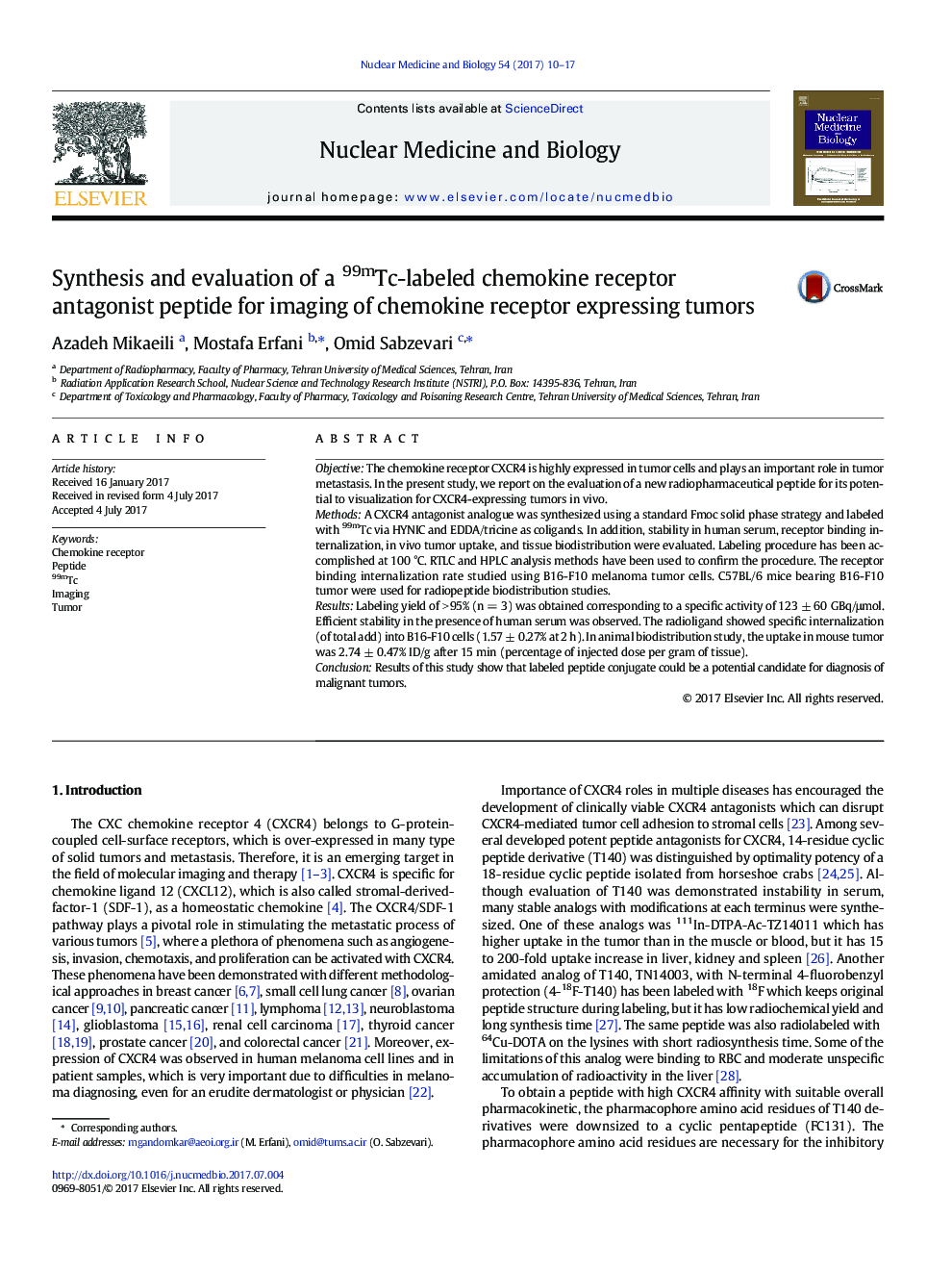| Article ID | Journal | Published Year | Pages | File Type |
|---|---|---|---|---|
| 5529020 | Nuclear Medicine and Biology | 2017 | 8 Pages |
ObjectiveThe chemokine receptor CXCR4 is highly expressed in tumor cells and plays an important role in tumor metastasis. In the present study, we report on the evaluation of a new radiopharmaceutical peptide for its potential to visualization for CXCR4-expressing tumors in vivo.MethodsA CXCR4 antagonist analogue was synthesized using a standard Fmoc solid phase strategy and labeled with 99mTc via HYNIC and EDDA/tricine as coligands. In addition, stability in human serum, receptor binding internalization, in vivo tumor uptake, and tissue biodistribution were evaluated. Labeling procedure has been accomplished at 100 °C. RTLC and HPLC analysis methods have been used to confirm the procedure. The receptor binding internalization rate studied using B16-F10 melanoma tumor cells. C57BL/6 mice bearing B16-F10 tumor were used for radiopeptide biodistribution studies.ResultsLabeling yield of > 95% (n = 3) was obtained corresponding to a specific activity of 123 ± 60 GBq/μmol. Efficient stability in the presence of human serum was observed. The radioligand showed specific internalization (of total add) into B16-F10 cells (1.57 ± 0.27% at 2 h). In animal biodistribution study, the uptake in mouse tumor was 2.74 ± 0.47% ID/g after 15 min (percentage of injected dose per gram of tissue).ConclusionResults of this study show that labeled peptide conjugate could be a potential candidate for diagnosis of malignant tumors.
